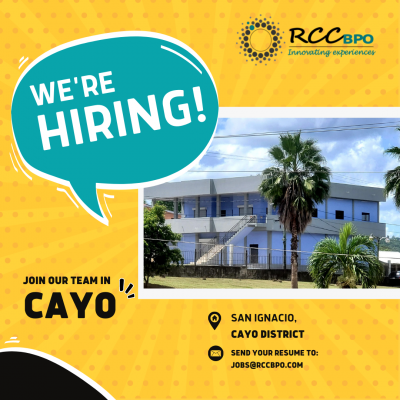- Submit News
- 501-666-6726
- [email protected]

Belize City teen reported missing
October 10, 2021
Confusion over vaccines muddles international travel
October 10, 2021Posted: Sunday, October 10, 2021. 2:29 pm CST.
The views expressed in this article are those of the writer and not necessarily those of Breaking Belize News.
By Dorian Barrow, Ph.D., Florida State University: It really feels great to be writing again. And I want to thank especially Mr. Hugh O’Brien from Breaking Belize News (BBN) for publishing the POINT AND COUNTER-POINT column on a weekly basis over the past few weeks. The aim of this column is to try to engage the wider Belizean population in a critical discourse on issues that are affecting us and our development, especially at this time of constrictions of the economy, the threat to the past gains we have made in education, our battles with the COVID-19 pandemic, and the continuing trend in the stagnation in our cultural vibrancy and ethnic development. As this past long weekend was our Heroes Day weekend when we would normally celebrate the Maya in the Ruta Maya canoe race and our Western heritage in the person of Baron Bliss, I have decided to focus on the East Indians of Belize, one of our ethnic groups that literally seems to be on the verge of extinction. We don’t yet have a single named East Indian on our list of National Heroes, even though our first Belizean Chief Justice, Doug Singh, was an East Indian Belizean. For me this is especially disconcerting in light of the fact that the new Briceno Government in their Plan Belize Manifesto in Education has indicated that they plan to “Expand teaching of African and Mayan history programs … at all levels [of the formal education system].”
Ascendants of Asian Indians comprise approximately 3% of the population of Belize. Even though Belize is the most culturally diverse nation in Central America and considers itself both Caribbean and Central American, it has the smallest population (400,000) of all non-island sovereign states in the Americas.
Our historians tell us that this, in part, is as a reflection of Belize’s history as a British colony that developed in a Spanish-dominated region. The 2010 population census showed that the majority of the population is of mixed ethnic origin being either English Creoles or Spanish Mestizos. Other groups, however, include the indigenous Maya and Garifuna, Europeans (English, Dutch, Germans and Spanish), Arabs, Chinese, and East Indians, the latter still being referred to locally by that century old pejorative label of ‘Coolie”.
The East Indians of Belize are descendants of indentured laborers who began to arrive in the country after 1838 to fill the labor gap caused by the abolition of slavery. They initially came to Belize from India, via Jamaica, to work in the Mahogany Camps and on the sugar plantations, and over the years were joined by other East Indian immigrants, including the Hindu merchants who came in the latter half of the 20 th Century. East Indians are distributed across a wide area in many villages and towns, primarily in the Corozal, Stann Creek, Toledo and the Belize Districts, and are said by some scholars to be “relatively well integrated into the Belizean population” (Minority Rights Group International, 2013, p.2) and by others as having been “almost completely intermixed [or assimilated] in terms of marriage and culture” (Belmopan City On-line, 2013). But very little is known about the intricacies of this intermixing or acculturation process of Indian Culture with the other ‘cultures’ of the place, Belize, to which these people immigrated.
In a study Dr. Carmen Lopez and I did a few years back, we tried to explore the attitudes of the East Indian population of Belize towards India and some of its cultural traditions, that is, their knowledge, feelings and behaviors towards Mother India and things ‘Indian’ – its social reality, their sense of being dislodged from that reality, and the extent to which there are efforts to network with reference groups in Mother India. In that sequential mixed-methods study we first surveyed a representative sample of the East Indian population in Belize using an Attitude survey instrument that we developed, followed by elite interviews of sixty East Indians resident in the Belize, Corozal and Toledo Districts to provide a fuller, richer description of their attitudes towards Mother India and things ‘Indian’ as described above and solicited via the survey.
The results were devastating. The research analysis suggested that East Indians of Belize have very little indigenous intimate knowledge of Indian culture; do not feel, in any meaningful way, of being dislodged from a motherland that has long been a very advanced civilization of great traders, magnificent cities, advanced in science, technology and mathematics, and now on the path to becoming a ‘super-power’.
But most importantly the East Indians of Belize are not now, or in the past, made any serious efforts to network with reference groups in Mother India. I must say that a few in the South led my Mrs. Palacio, and in the North, led by people like Ms. Sylvia Perez and Ms. Lydia from Calcutta, Corozal have been active in trying to keep the culture alive. Ms. Lydia, for example, has established the only East Indian Museum in the country at her home in Calcutta, and Sylvia Perez and Mrs. Palacio and others are actively promoting the East Indian version of NICH in the country. Though people like Ms. Marie Lewis of Faber’s Road is fighting up with keeping elements of the East Indian culture alive, she is frustrated and getting even more warry as she sees more and more East Indians are being ‘Creolized’ in the area.
One young East Indian woman we interviewed said that she will “never marry an East Indian man since all that they seem to want to do is smoke weed, fish, hunt iguana, catch crab, and drink rum” and she added “I no de pa dat!”
One of the implications of these findings is whether the Belizean community should persist on categorizing the East Indians of Belize as being ‘relatively well integrated into the Belizean society’, or as ‘completely intermixed in terms of marriage and culture’ vis-à-vis as being almost totally assimilated into one or the other of the two major ethnic groups – Creole or Mestizo – that now comprise the evolving two major ethnic groups in the multicultural society of the modern Belize. If the latter is the decision then what logically follows is for us to remove this ethnic grouping [East Indian] as an ethnic category in our census collection data forms. This would be urgent since the Statistical Institute of Belize (SIB) is about to embark on collecting data for the 2020 census. If not them we, including the government, needs to begin to do a lot more to help revive the ethnic identity of East Indians of Belize. The ‘Make Belize Work Manifesto’ could begin by modifying the Education Policy Point #9 to read “Expand the teaching of African, East Indian and Mayan History programs and civics at all levels.”
Please feel free to challenge the views expressed here and let’s get this critical discourse on these issues affecting us in Belize going.
Dr. Dоrіаn Ваrrоw іѕ сurrеntlу wоrkіng аt Gаlеn University аѕ the Dеаn оf the Dераrtmеnt оf Еduсаtіоn. Не hаѕ а lоng hіѕtоrу оf іnvоlvеmеnt іn еduсаtіоn іn Веlіzе, hаvіng ѕеrvеd аѕ а Lесturеr аt the University оf Веlіzе, аnd аѕ Сhіеf Ехесutіvе Оffісеr іn the Міnіѕtrу оf Еduсаtіоn. Dr. Ваrrоw іѕ аn еmіnеnt рrоfеѕѕіоnаl who іѕ wеll rеѕресtеd bоth lосаllу аnd аbrоаd. Не іѕ ѕеrvіng аѕ аn еdіtоrіаl mеmbеr аnd rеvіеwеr оf ѕеvеrаl іntеrnаtіоnаl rерutеd јоurnаlѕ аnd hаѕ аuthоrеd mаnу rеѕеаrсh аrtісlеѕ/bооkѕ rеlаtеd tо еduсаtіоn. Араrt frоm еduсаtіоn, hе іѕ аlѕо а ѕроrtѕ еnthuѕіаѕt.
Advertise with the mоѕt vіѕіtеd nеwѕ ѕіtе іn Belize ~ We offer fully customizable and flexible digital marketing packages. Your content is delivered instantly to thousands of users in Belize and abroad! Contact us at mаrkеtіng@brеаkіngbеlіzеnеwѕ.соm or call us at 501-612-0315.
© 2021, BreakingBelizeNews.com. Content is copyrighted and requires written permission for reprinting in online or print media. Theft of content without permission/payment is punishable by law.



































































Comments